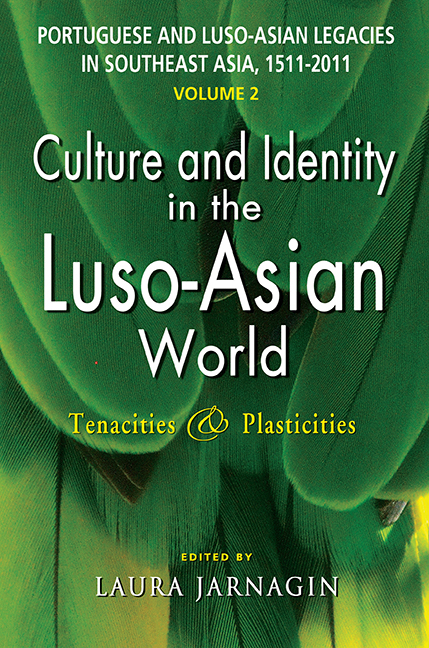 Portuguese and Luso-Asian Legacies in Southeast Asia, 1511-2011, vol. 2
Portuguese and Luso-Asian Legacies in Southeast Asia, 1511-2011, vol. 2 from Part Three - Adversity and Accommodation
Published online by Cambridge University Press: 21 October 2015
The history of Sino-Portuguese encounters — their initial years in particular — has often been told. Cultural dimensions of the exchanges between the two parties also have been studied repeatedly. While there is no need to reiterate those investigations, we obviously cannot proceed without taking into account some of the known details and therefore we will start out by giving a chronologically arranged synoptic introduction. Not that the events “in themselves” are essentially of interest to us here, but rather the structural principles underlying these contacts; in other words, the conditions which were to shape certain modes of interaction over a long period of time. We must take into account the fact that these principles evidently have been subject to change, that they were not always consistent, and that some of the images that the scholarship has maintained to this day would indeed have to be redrawn. There is a central element in particular which is pertinent to this: speaking of “China” as an entirely self-contained entity in its own right — in terms of economy and culture — seems only partly correct for the sixteenth and seventeenth centuries. A more useful assumption would be to consider that the Portuguese were in fact facing a number of various local Chinese groups and regions. And something similar applies to the Portuguese side of the matter: the Portuguese-speaking population living in permanent residency in Macao did indeed act and think in quite different ways from those recently arrived from Europe or India. One might almost speak of different identities, though I would not want to go so far as that.
CHRONOLOGY
Let us begin then with a briefly summarized chronology of important events. The first Sino-Portuguese encounters on record took place in Malacca. Several Chinese groups seem to have welcomed the Portuguese conquest of the locale (in 1511) — its part in international trade at the time has been vastly overstated — and henceforth worked together with the Portuguese.
To save this book to your Kindle, first ensure [email protected] is added to your Approved Personal Document E-mail List under your Personal Document Settings on the Manage Your Content and Devices page of your Amazon account. Then enter the ‘name’ part of your Kindle email address below. Find out more about saving to your Kindle.
Note you can select to save to either the @free.kindle.com or @kindle.com variations. ‘@free.kindle.com’ emails are free but can only be saved to your device when it is connected to wi-fi. ‘@kindle.com’ emails can be delivered even when you are not connected to wi-fi, but note that service fees apply.
Find out more about the Kindle Personal Document Service.
To save content items to your account, please confirm that you agree to abide by our usage policies. If this is the first time you use this feature, you will be asked to authorise Cambridge Core to connect with your account. Find out more about saving content to Dropbox.
To save content items to your account, please confirm that you agree to abide by our usage policies. If this is the first time you use this feature, you will be asked to authorise Cambridge Core to connect with your account. Find out more about saving content to Google Drive.